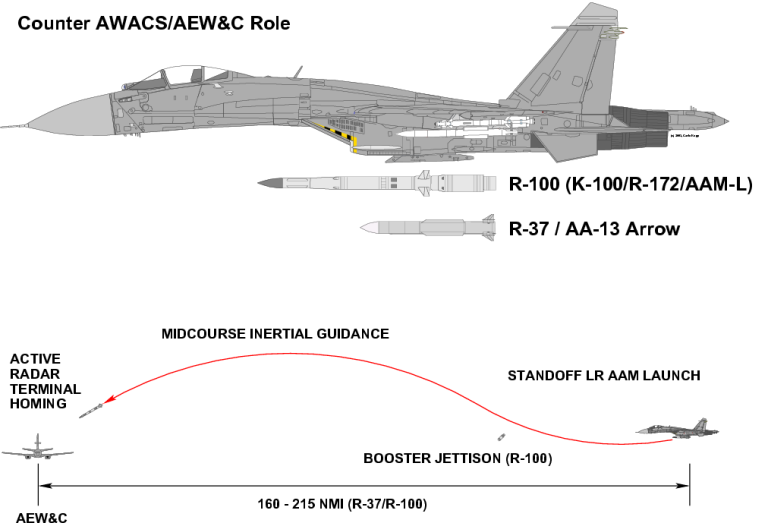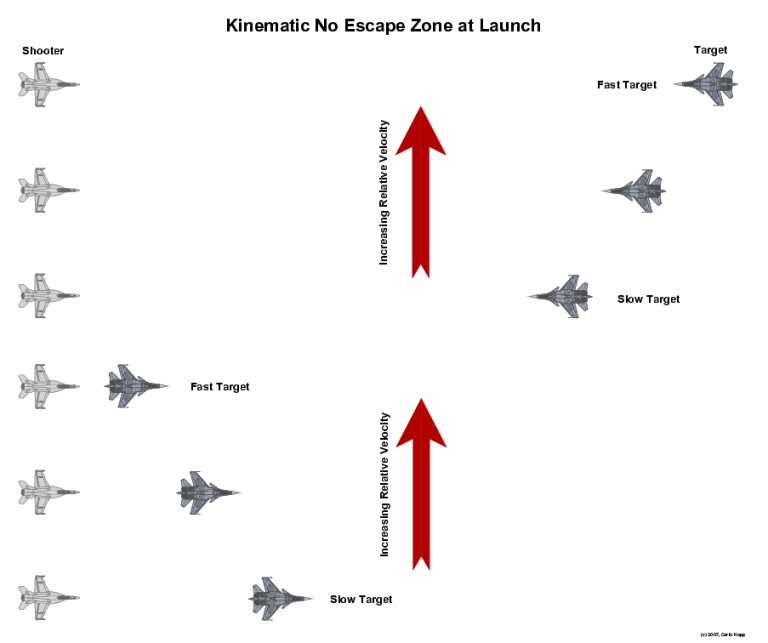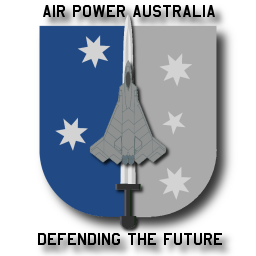|
||||||||||||||||||||||
![Home - Air Power Australia Website [Click for more ...]](APA/APA-Title-NOTAM.png) |
||||||||||||||||||||||
![Sukhoi PAK-FA and Flanker Index Page [Click for more ...]](APA/flanker.png) |
![F-35 Joint Strike Fighter Index Page [Click for more ...]](APA/jsf.png) |
![Weapons Technology Index Page [Click for more ...]](APA/weps.png) |
![News and Media Related Material Index Page [Click for more ...]](APA/media.png) |
|||||||||||||||||||
![Surface to Air Missile Systems / Integrated Air Defence Systems Index Page [Click for more ...]](APA/sams-iads.png) |
![Ballistic Missiles and Missile Defence Page [Click for more ...]](APA/msls-bmd.png) |
![Air Power and National Military Strategy Index Page [Click for more ...]](APA/strategy.png) |
![Military Aviation Historical Topics Index Page [Click for more ...]](APA/history.png)
|
![Intelligence, Surveillance and Reconnaissance and Network Centric Warfare Index Page [Click for more ...]](APA/isr-ncw.png) |
![Information Warfare / Operations and Electronic Warfare Index Page [Click for more ...]](APA/iw.png) |
![Systems and Basic Technology Index Page [Click for more ...]](APA/technology.png) |
![Related Links Index Page [Click for more ...]](APA/links.png) |
|||||||||||||||
![Homepage of Australia's First Online Journal Covering Air Power Issues (ISSN 1832-2433) [Click for more ...]](APA/apa-analyses.png) |
|
|||||||||||||||||||||
| Last Updated: Mon Jan 27 11:18:09 UTC 2014 | ||||||||||||||||||||||
|
||||||||||||||||||||||
|
||||||||||||||||||||||
![Home - Air Power Australia Website [Click for more ...]](APA/APA-Title-NOTAM.png) |
||||||||||||||||||||||
![Sukhoi PAK-FA and Flanker Index Page [Click for more ...]](APA/flanker.png) |
![F-35 Joint Strike Fighter Index Page [Click for more ...]](APA/jsf.png) |
![Weapons Technology Index Page [Click for more ...]](APA/weps.png) |
![News and Media Related Material Index Page [Click for more ...]](APA/media.png) |
|||||||||||||||||||
![Surface to Air Missile Systems / Integrated Air Defence Systems Index Page [Click for more ...]](APA/sams-iads.png) |
![Ballistic Missiles and Missile Defence Page [Click for more ...]](APA/msls-bmd.png) |
![Air Power and National Military Strategy Index Page [Click for more ...]](APA/strategy.png) |
![Military Aviation Historical Topics Index Page [Click for more ...]](APA/history.png)
|
![Intelligence, Surveillance and Reconnaissance and Network Centric Warfare Index Page [Click for more ...]](APA/isr-ncw.png) |
![Information Warfare / Operations and Electronic Warfare Index Page [Click for more ...]](APA/iw.png) |
![Systems and Basic Technology Index Page [Click for more ...]](APA/technology.png) |
![Related Links Index Page [Click for more ...]](APA/links.png) |
|||||||||||||||
![Homepage of Australia's First Online Journal Covering Air Power Issues (ISSN 1832-2433) [Click for more ...]](APA/apa-analyses.png) |
|
|||||||||||||||||||||
| Last Updated: Mon Jan 27 11:18:09 UTC 2014 | ||||||||||||||||||||||
|
||||||||||||||||||||||
Пестицид для Супер Шершней [Pesticide for Super Hornets] |
||||||||
|
Air Power
Australia - Australia's Independent Defence Think Tank
|
||||||||
| Air Power Australia NOTAM 6th August, 2007 |
||||||||
|
||||||||
|
||||||||
Editor's
Note
Following the overwhelming response to NOTAM #2, APA approached Col. Medved for additional contributions to the NOTAM series. Happily, Col. Medved agreed to this. To retain the tone of the original, a minimum of copy editing was performed by APA. |
||||||||
This NOTAM will discuss how we deal with the Super Hornet fighter using our Flankers and Russian weapons complexes. If good friends at Omega Services PMC [1] hire Grisha to advise military planners in Asian countries, who are buying air superiority fighters, this is the kind of advice Grisha provides. You need to know how good Super Hornet flies? We studied this subject for a long time and used analysis in design of Sukhoi and MiG. Good for stock values and revenues! Asian countries advise of being tired of loss-of-face from domination of air by Australia’s Hornet and F-111. New aircraft come onto Asian region and old Hornets and F-111 retire, so balance of power in air combat can change. American dollar is falling like broken lift, but even so Russian aircraft remain still much cheaper. Asian clients ask me - can Russian aircraft do the job over Super Hornet and F-35 JSF? Is acceptable by them to post APA NOTAM – Asian clients say give back face. Two seat combat aircraft better – make space for some more Omega advisors to help fight. So, I offer basis of analysis by using Su-30MKI/MKM, Su-30MKK/MK2 or Su-35BM. Add Flanker upgrades as they come – Sukhoi factory very quick at upgrades. Grisha says «you can make a big fighter into attack aircraft, but find very hard to make medium attack aircraft into good fighter». Need to depend on better radio-location system [Editor: RLS - Russian jargon for airborne radar] and weapons, but if get caught, maybe get run down and killed by enemy fighter. Much depend on fuel, range and payload. Long distances around Asia, so my advice to fit centerline conformal tank on Sukhoi – holds 6,000 kg fuel and reduces radio-location reflections [Editor: radar signature] – still plenty of space for weapons on wing and body. Also fly where Sukhoi own sky – above 15,000 metres [Editor: 45 kft]. Have radio-electronic combat systems Khibiny-M [Editor: KNIRTI L175M defensive Electronic Support Measures receiver], Sorbtsiya [Editor: KNIRTI L−005 wingtip phased array jamming pods] and Lobushka [Editor: towed decoy] fitted to Sukhoi fighter. To make analysis clear, break air combat in parts, from the time aircraft take off from Australia through to the end of combat in «battle space». Start when aircraft assemble and take off. Difficult to hide many aircraft on combat mission. Sometimes have spies on ground with mobile phone [2]. Use MacDonald's code for types – Big-Mak, Quarter-Pounder, Super Fries, Small Fries – you get idea. Phone order to cut-out telephone number, or «Internet Cafe», then onto Network Centre in far away country so know Mak order coming. Have sea-ships in key points to read signals – Russia been doing this for long time. Have new electronic reconnaissance complexes [Editor: ESM and direction finding receivers] and infrared sensors on ships. Find track and pass to Network Centre. Plenty time to load best weapons and fuel for «counter-air» mission. 
Next phase in
combat is first radio-location system
contact. If radio-location signal from Big-Mak [Editor: Wedgetail
AEW&C MESA radar emissions], Sukhoi go around Super-Fries, take
big prize. Have Mak and Super-Fries killers in same bunch. Use K-100
[Editor: Novator R-172/KS-172/AAM-L] or R-37 [Editor: Vympel AA-13
Arrow] for 300 km to 400 km engagement, X-31A and P [Editor: Kh-31A/P /
AS-17 Krypton] for close work. Look for Quarter-Pounder [Editor: A330-200MRTT aerial refuelling tanker] on radio-location system – N011M [Editor: Tikhomirov NIIP N011M BARS phased array radar on Su-30MK] can see a long way at this height as radio-location system horizon almost 500 km. Tankers only have 600 km/hr speed, while Sukhoi have top speed to 2,500 km per hour, so can run down and kill tanker quickly. Big centerline fuel tank help the Sukhoi fighter here. Might have only Super-Fries [Editor: tanker escort CAP] – has good radio-location system so see Sukhoi first – but Khibiny radar warner-receiver know [Editor: ESM receiver] Super-Fries coming. Cannot change physics laws. Give Super-Fries time to bug-out but not make mission success. Soon close to
time Sukhoi
see
Super-Fries with radio-location system. Minister Nelson say Super Fries
stealthy, Russian Institute of Radio
Physics and Electronics says not so, when Super-Fries carry weapons and tanks on
pylons, see about 200 km with N011M radio-location system, much better
with new Irbis-E radio-location system [3]. This
is far away from AIM-120 range of about 80 km, so have lots of time
for free shots at Super-Fries. Shoot pairs of R-77M with mixed
self-guidance heads [Editor: GSN - Russian jargon for missile seeker] –
active radio-location missile go first, if scare him pretty good so he
turn
to beam, expose his pants to R-77M Infra-Red or Optical missiles [4]. Super-Fries ALE-55 radio-electronic combat complex [Editor: Russian jargon for towed decoy] good against radio-location guidance missile, not so good on Infra-Red or Optic. Can dance around outside Super-Fries' missile range and use Sukhoi radio network [Editor: TKS-2 intraflight digital radio datalink / network] to make sure no Sukhois in range of Super-Fries' missile. Omega advisor in back of Sukhoi help here as fighter controller. Stay until Super-Fries reach Bingo [Editor: only fuel remaining to get home] and run for home – cannot escape at Mach 1.6 when Sukhoi make 2.35 – take R-77 or R-27 in pants. Next is guts
fight –
close inside AIM-120 range. Still some tricks to use. Sukhoi OLS-30
[Editor: Infra-Red Search and Track set] sees flare of Super-Fries' missile launch at long range – gives
time to turn
away and wait until Super-Fries' missile fall into sea. Then turn back to close
again. Have lots of fuel and many weapons, so can play «cat and mouse»
for some turns. Grisha likes upgrade to OLS-35, which looks all round
Sukhoi aircraft all the time. Maybe Grisha
makes
mistake and misses Super-Fries, and radio-electronic combat complex warning alarm start as Super-Fries' missile self-guidance head radio-location system switches on
to transmit [Editor: AIM-120 seeker going active]. Break turn and
use Khibiny, Sorbtsiya and Lobushka radio electronic combat complex
[Editor: EW self protection suite]. Lots of G for
minute or so. Not many missiles good at high G above 15,000 metres.
Also fire nose first, then turn and guide missile with tail
radio-location system. Not
touch Grisha this way. Tail radio-location system watch to see no
surprises [5].
If Super-Fries go home and not die this time, then Grisha get Super-Fries next time. Get closer for «knife
fight»
if missiles and radio-location system jammed by Super-Fries' radio electronic combat
complex. Switch
on own radio
electronic combat complex to spoil radio-location system
missiles. Can fly higher and turn much faster than Super-Fries so he
have job getting it up. Sukhoi have had helmet sight long time for R-73 shots, since 1980s. Even fire R-73 backwards on some Sukhois [6]. Here can turn quicker and get first shot, then move out of fight. Like guns very much – video from gunsight alway good discussion in officer mess! So, Grisha thinks the Sukhois have a good chance against Super-Fries but not other way round. Need to think tactics and fighter positions in combat situation. Sukhoi can fly higher, faster, longer, turn much better and have good radio-location system and radio electronic combat complex, plus Infra-Red sensors. Stay in area of superiority above Super-Fries and win almost all times. Minister Nelson say Super-Fries decision «no-brainer». Seems right – he makes big joke!
|
||||||||
|
||||||||
|
||||||||
|
Col. Grisha Medved is a former retired fighter pilot. Endnotes and Comments: [1]
Omega
Services PMC is a Russian contractor specialising in the provision of
experienced military personnel and consultancy, occupying a similar
market niche to Blackwater and other US contractors. With access to a
very large pool of highly experienced former Soviet and Russian
military professionals, Omega provide highly capable consultancy
services. URI: http://omega.warfare.ru/content/view/13/40/lang,en/
[2] Col Medved is describing a technique used very effectively by Australia against the Japanese during WW2, and more recently against the Argentinians by the British in 1982. Ground observers use covert channels to report on aircraft departures and geography permitting, outbound headings. [3] The Irbis E is a block upgrade to the N-011M BARS on the Su-30MKI/MKM, or a retrofit option for the Su-27SKM/Su-30MKK/MK2. It is the baseline radar configuration for the Su-35BM. [4] This is a standard evasive tactic when under attack by a radar guided missile. The aim is to cause a rapid change in Doppler which may cause a seeker lock to break, while also maximising the angle rate and G-load the inbound missile must sustain to track the target. NB Russian and previously Soviet policy was and remains to retrofit alternate seekers to long range / BVR missiles. The seekers used in the R-73 family of short range air combat missiles have been retrofitted to the R-27 / AA-10 Alamo and R-77 / AA-12 Adder BVR missiles. The 'Optical seeker' referred to here is the third generation imaging seeker in development for the R-74 series, similar to the ASRAAM, Python 5 and AIM-9X seeker. The play is to force the target fighter to turn and expose its hot end to the inbound heatseeking missile. If the fighter has to use afterburner to sustain the turn, then its heat signature is further increased aiding the second inbound missile in detection and tracking. [5] A tail warning radar is an option for a number of Flanker variants, mounted in the centrebody tail bullet. Phazotron and Tikhomirov NIIP have offered several phased arrays for this application, including derivatives of inlet nose bullet radars designed for block upgrades of the MiG-21 / J-7 Fishbed fighters. While these radars lack the range of the nose mounted BARS and Irbis-E, they are significantly more powerful and longer ranging than active radar Missile Approach Warning Systems (MAWS) available for Western fighters, and double up as midcourse datalink transmitters for missile guidance. This allows the Flanker to take a BVR missile shot, perform a maxium G U-turn, and continue to provide midcourse guidance updates to the missile as it retreats from the missile engagement envelope of the target fighter. Target coordinates, where the tail warning radar lacks the required performance to maintain a track, would be relayed via TKS-2 datalink from another Flanker to cue the radar boresight. Readers should note that missile kinematic No Escape Zones (NEZ) are strongly asymmetric in relation to the direction the target is flying in - in a closing geometry with the missile and target heading toward each other, the NEZ footprint is large since the relative velocity is the sum of the missile and target velocities. Conversely, the kinematic NEZ footprint shrinks dramatically in a tailchase geometry, as the relative velocity is the difference in the velocities of the missile and target. In a scenario where the fighters initiate the engagement head to head at maximum missile kinematic range, if one of the fighters can turn away immediately after its opponent launches, the changed engagement geometry shrinks the missile NEZ. If the retreating fighter has a tail mounted radar, it can continue to guide its missile against the advancing fighter, but the latter can no longer hit the retreating fighter and must deal with an inbound missile.  [6] The Vympel R-73R variant has a booster pack attached and is designed to be carried tail first on a launch rail, and fired backward. |
||||||||
| Air
Power Australia Website - http://www.ausairpower.net/ Air Power Australia Research and Analysis - http://www.ausairpower.net/research.html |
||||||||
 |
||||||||
| |
||||||||
|
|||||||||||||
![Sukhoi PAK-FA and Flanker Index Page [Click for more ...]](APA/flanker.png) |
![F-35 Joint Strike Fighter Index Page [Click for more ...]](APA/jsf.png) |
![Weapons Technology Index Page [Click for more ...]](APA/weps.png) |
![News and Media Related Material Index Page [Click for more ...]](APA/media.png) |
||||||||||
![Surface to Air Missile Systems / Integrated Air Defence Systems Index Page [Click for more ...]](APA/sams-iads.png) |
![Ballistic Missiles and Missile Defence Page [Click for more ...]](APA/msls-bmd.png) |
![Air Power and National Military Strategy Index Page [Click for more ...]](APA/strategy.png) |
![Military Aviation Historical Topics Index Page [Click for more ...]](APA/history.png)
|
![Information Warfare / Operations and Electronic Warfare Index Page [Click for more ...]](APA/iw.png) |
![Systems and Basic Technology Index Page [Click for more ...]](APA/technology.png) |
![Related Links Index Page [Click for more ...]](APA/links.png) |
|||||||
![Homepage of Australia's First Online Journal Covering Air Power Issues (ISSN 1832-2433) [Click for more ...]](APA/apa-analyses.png) |
|||||||||||||
| Artwork, graphic design, layout and text © 2004 - 2014 Carlo Kopp; Text © 2004 - 2014 Peter Goon; All rights reserved. Recommended browsers. Contact webmaster. Site navigation hints. Current hot topics. | |||||||||||||
|
Site Update
Status:
$Revision: 1.753 $
Site History: Notices
and
Updates / NLA Pandora Archive
|
|||||||||||||
|
|
Tweet | Follow @APA_Updates | |||||||||||
|
|
|||||||||||||
|
|
|||||||||||||